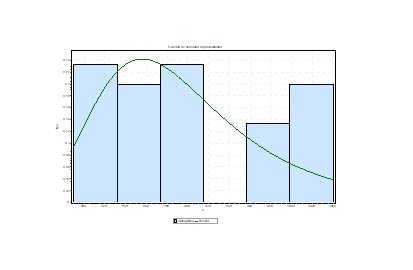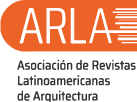Determinación de la distribución de probabilidades de los componentes de mezclas de concreto
DOI:
https://doi.org/10.13140/RG.2.2.19769.90726Palabras clave:
mezclas de concreto, componentes del concreto, manual ACI¸, manual de PorreroResumen
La presente investigación tiene como finalidad describir el comportamiento estadístico y determinar las distribuciones de probabilidades que mejor se ajustan a cada uno de los componentes de mezclas de concreto convencional, los cuales son agua, cemento, agregado fino y agregado grueso, diseñados por los métodos de Porrero y del ACI para resistencias a la compresión entre 250 y 280 Kg/cm2 con tamaño máximo nominal de 1,0 pulgada, asentamientos hasta 6,0 pulgadas, cemento Portland tipo I o tipo CPCA1 y arena natural. Para tal fin, fue necesaria la construcción de una base de datos bajo la consulta de tesis de grado elaboradas en el Decanato de Ingeniería Civil de la Universidad Centroccidental Lisandro Alvarado, se revisaron 228 trabajos de grado de las cuales 66 cumplieron con el alcance establecido. El análisis estadístico descriptivo reportó dispersiones bajas e intermedias, se concluyó que la media aritmética obtenida si representa el conjunto de datos por variable y las distribuciones obtenidas para el agua, cemento, agregado fino y agregado grueso fueron Gen. Gamma (4P), Gen. Extreme Value, Weibull (3P) y Frechet respectivamente para el método del ACI y para el de Porrero Hypersecant, Log-Pearson 3, Johnson SB y Chi-Squared (2P) según corresponde.
Descargas
Citas
ACI 211.1-91 «Standard Practice for Selecting Proportions for Normal, Heavyweight, and Mass Concrete» American Concrete Institute, 2002
J. Porrero, et al. «Manual del concreto estructural» SIDETUR, Caracas, Venezuela, 2004
A. García, «Análisis de Distribuciones Estadísticas Alternativas a las Tradicionales para la Optimización de los Caudales de Cálculo Empleados en los Estudios Hidrológicos» (Tesis Doctoral), Universidad de Extremadura, Badajoz, 2013
Z. Cerón, «Análisis Probabilístico del Concreto de Alta Resistencia» (Trabajo de Grado) Universidad Católica de Colombia, 2013
COVENIN 221:2001 «Materiales de Construcción. Terminología y definiciones» FONDONORMA, Venezuela, 2001
N. Azuaje, et. al, «Estimación de la constante de carbonatación “K” en concreto expuesto al ambiente en la ciudad de Nirgua, Estado Yaracuy» Trabajo Especial de Grado, Universidad Centroccidental Lisandro Alvarado, Venezuela, 2013
R. A. Dantas, «Ingeniería de tasaciones una introducción a la metodología científica» premio Charles B. Akerson – UPAV 2000, Ed. Pini Ltda, 2002
M. Suarez, «Curso Estadística» Universidad Centroccidental Lisandro Alvarado, Decanato de Ingeniería Civil, Venezuela, 2008
A. Rojas, «Correlación entre el pulso ultrasónico y la resistencia a compresión en cilindros de concreto» Trabajo Especial de Grado, Universidad Centroccidental Lisandro Alvarado, Decanato de Ingeniería Civil Urbanismo, Venezuela. 2011
Mathwave Tecnologies, «Ayuda del Software EasyFit versión 5.6.», 2015

Publicado
Cómo citar
Número
Sección
Derechos de autor 2021 Mariana Suárez Pereira, Fiamma Dubraska Peña Fabiani

Está obra está bajo licencia Creative Commons Attribution-NonCommercial-ShareAlike 4.0 International License.
Las opiniones expresadas por los autores no necesariamente reflejan la postura del editor de la publicación ni de la UCLA. Se autoriza la reproducción total o parcial de los textos aquí publicados, siempre y cuando se cite la fuente completa y la dirección electrónica de esta revista. Los autores(as) tienen el derecho de utilizar sus artículos para cualquier propósito siempre y cuando se realice sin fines de lucro. Los autores(as) pueden publicar en internet o cualquier otro medio la versión final aprobada de su trabajo.






.png)




